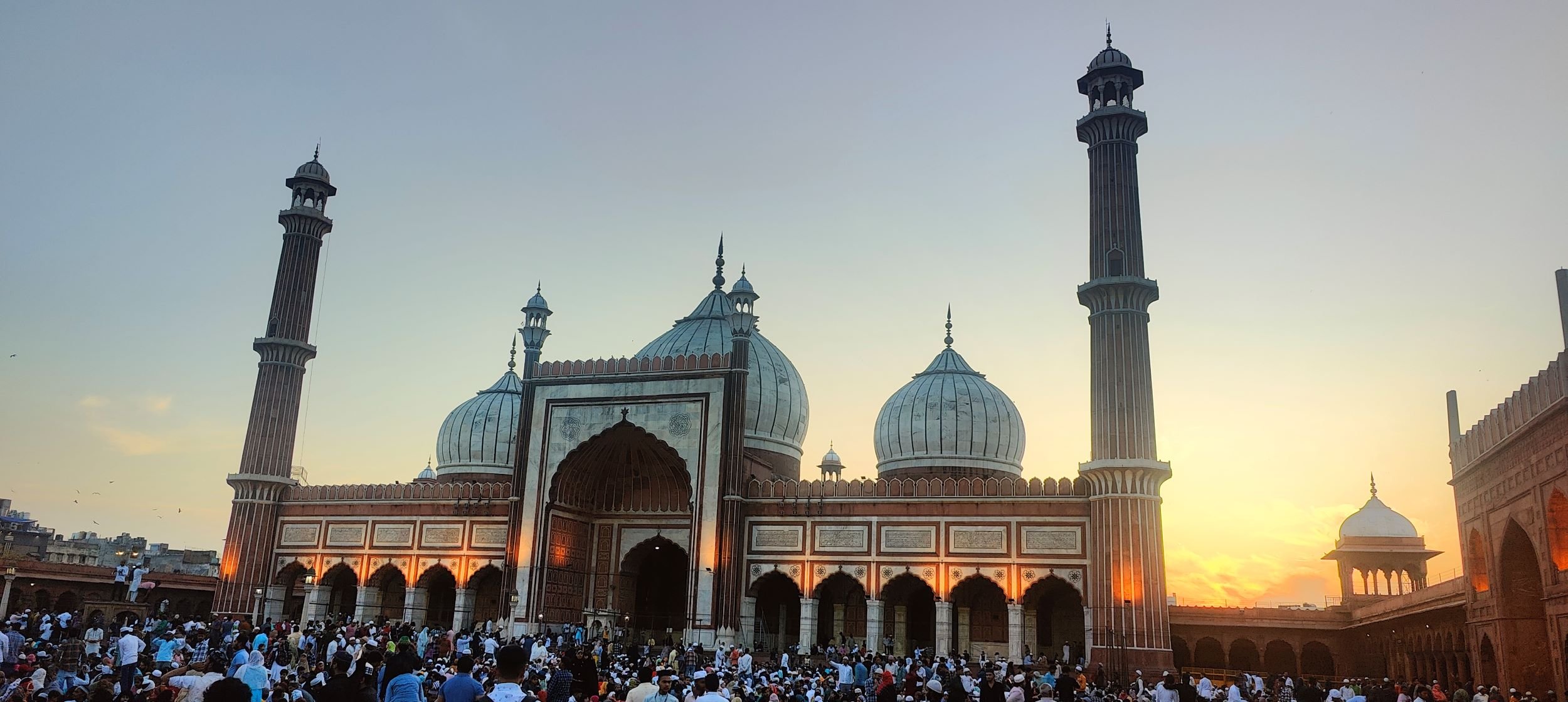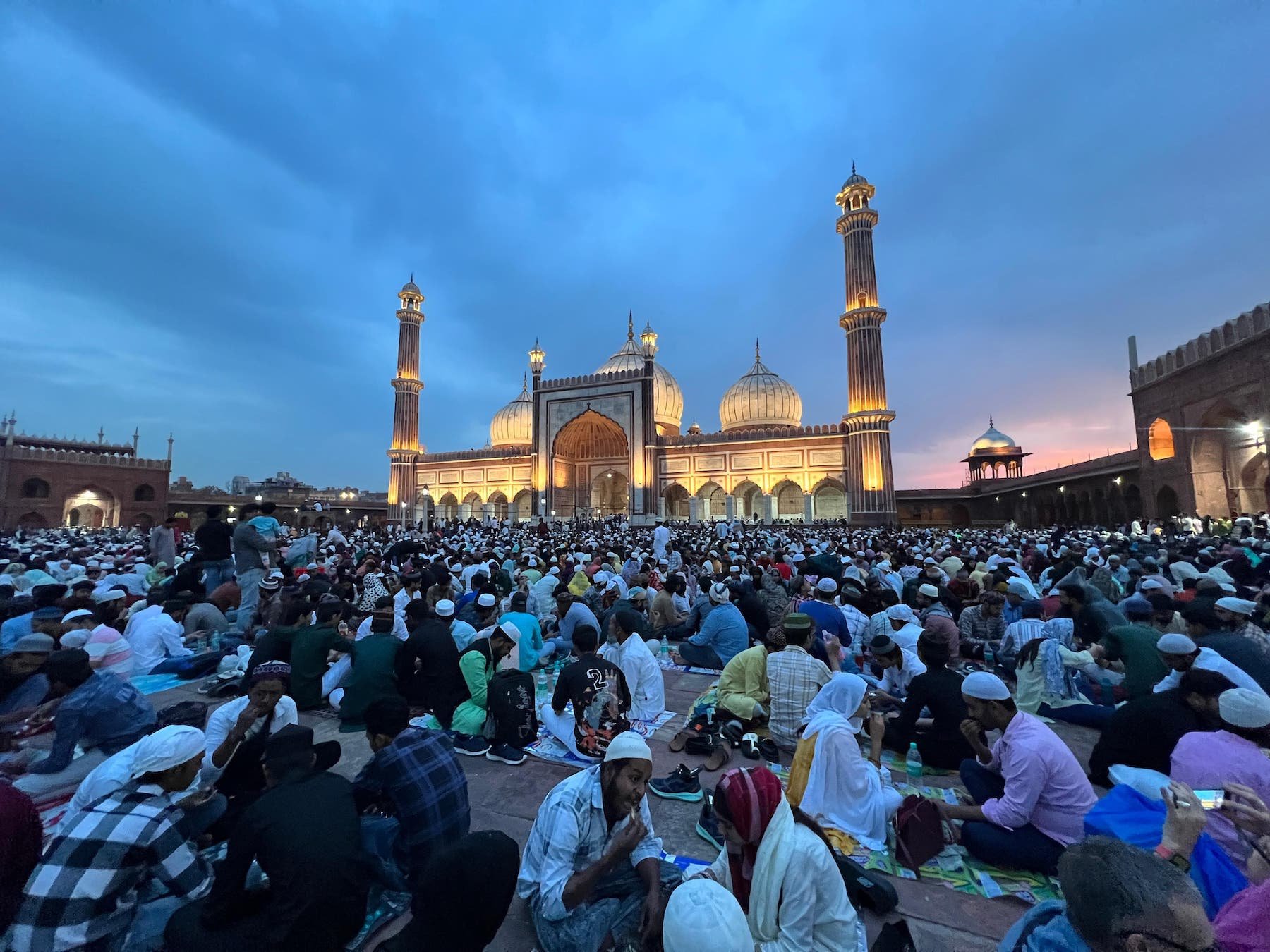An Iftar Walk through Old Delhi with Chef Sadaf Hussain

Sadaf Hussain takes us on a walk through Lajpat Nagar & Old Delhi’s Matia Mahal in time for Iftar.
Over the last 13 years, I can see clearly how Ramzan has evolved from a Muslim-only festival to one that the crowds throng to, to celebrate with us. People want to visit because they want to be part of the festivities, that celebratory iftar vibe.
Breaking fast after namaz at the Jama Masjid
Aalo pakoda is the simple besan-batter pakodas. Delhi folks love their simple pakoda with chaat masala and chutney, with thin slices of aalo, batter-fried;
Al-Aman serves varieties of seekh kabab, both mutton and chicken across a range of spice levels.
Kheema samosas are a favourite at the home iftari table.
Kheema goli and kache keema kebabs are marinated with spices, onion, and then deep fried. These are a Ramzan special, and you won’t find them in Old Delhi during the year.
Laung chidey is popular in Delhi, Lahore and Karachi. These are light besan pakodas, paired with a tangy imli chutney and raw onion.
Kalmi vadas are crisp dal vadas, deep dried and usually used in chaat. But Ramzan is the only time they are eaten exclusively as vadas.
Nariyal paratha is a bit of a misnomer — its more of a bun than a paratha. Delicately sweet, it is topped with grated coconut. We dip into milk while eating, but you can smear it with jam or butter like maska pav.
In Old Delhi, no one sleeps. During the month of Ramzan, the restaurants are open till 6 am, from iftar, all the way until sehri. And then, they open again by 2 pm. It’s a sea of people; there’s no getting around it. You’re bound to bump into people, but there is something incredible about being part of that kind of atmosphere in the middle of a city.
Pheni is a deep-fried treat made with flour, and is eaten at sehri, usually with milk.
Khajla is sehri food too, and typically consumed by breaking it into milk.
Mohabbat ka Sharbat, a drink made with Roohafza, watermelon, full fat milk and lots of ice.
I’ve noticed that it isn’t just the food that people come for; there is so much curiosity. One question I am asked every time I do a walk is: “You’re not even allowed water during Ramzan?” People want to know how we pass the days, the month; they are curious about the daily rituals of Ramzan, why we eat what we eat. They are always surprised that the home Iftar is not meat-heavy, and is in fact, largely vegetarian — sometimes even switching to vegan.
Chana Gugni is a light bite, common at the dastarkhwan.
It is eaten sometimes with masala, sometimes on its own, but without doubt, always present.
Sheermal, the Afghani bread, is not unique to Ramzan, but is very much a part of our dinner, after Iftar. It is excellent to mop up kormas with.
A kebab-seller waiting for namaz near Jama Masjid
In Old Delhi, iftari food isn’t spicy, and that always surprises people. But chillies only came here at the end of the Mughal era, with the Marathas. Another myth that we bust on my walks through Old Delhi is that is it a Muslim-only area; I always end my walk at a Radhakrishna Mandir, and that is always a surprise.
Sadaf Hussain is the author of Daastan-E-Dastarkhan and a TEDx speaker.
ALSO ON GOYA
























